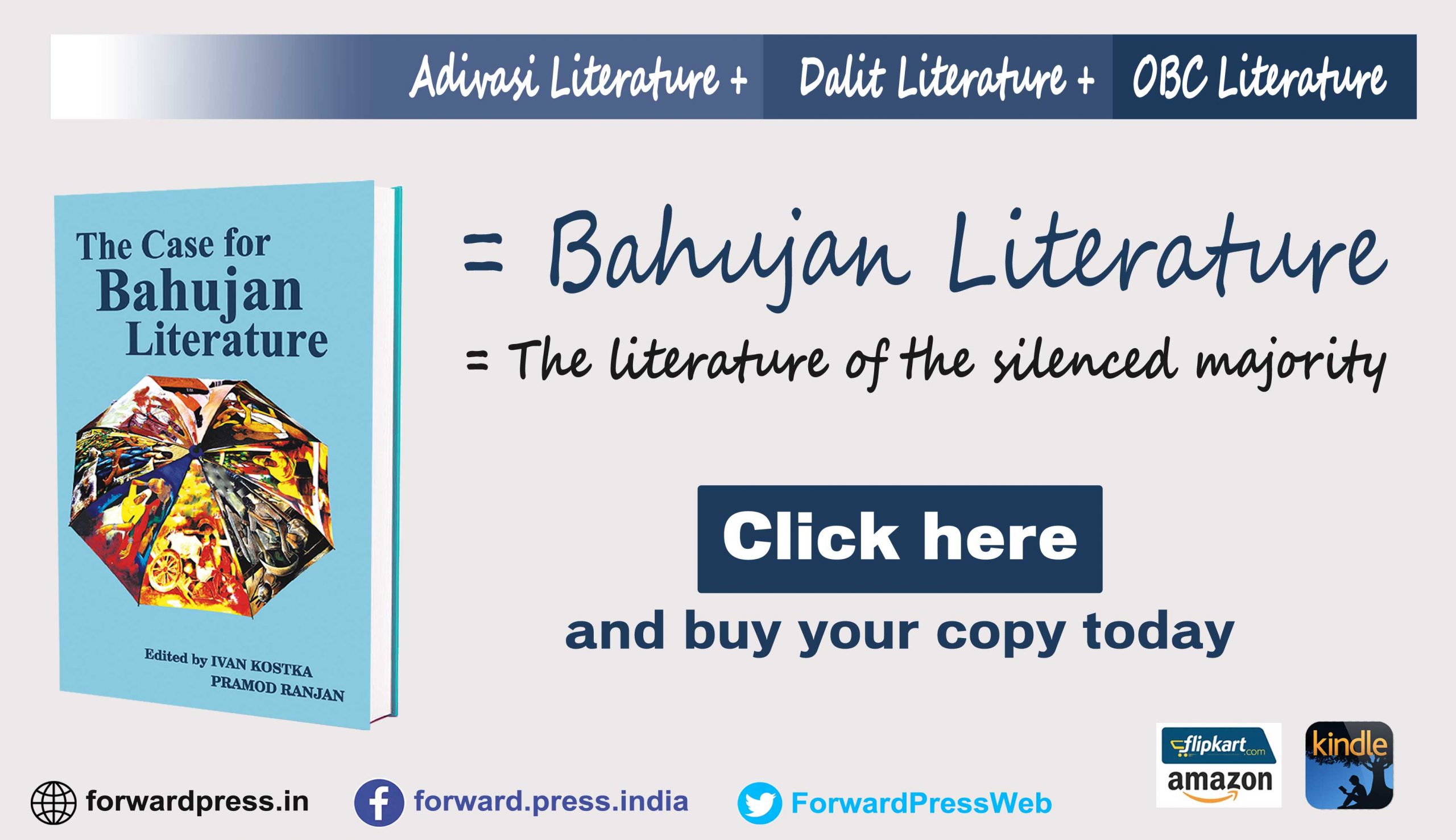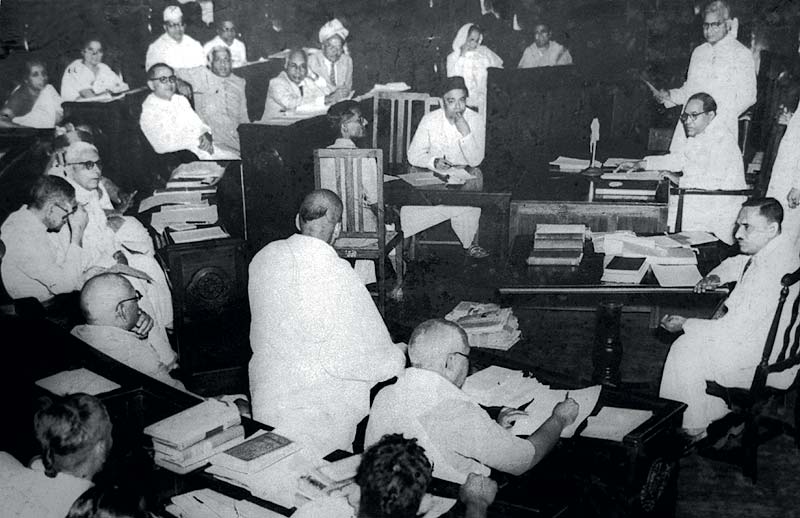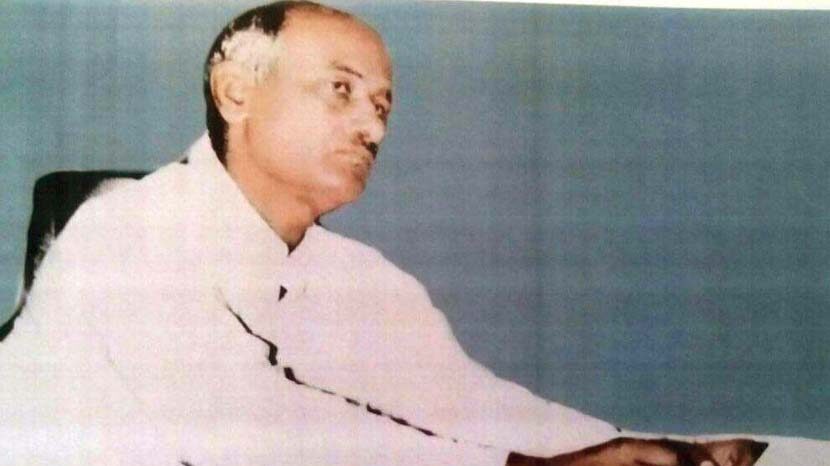Caste heroes of Bahujan
The political discourse of the Dalits today is based on their own culture comprising caste heroes and the collective memories around them. These heroes and their myths are helping them to develop a new emancipatory cultural form that subverts the brahmanical code and is a dissent against the constant humiliation faced by them in their everyday lives sanctioned by the ancient texts of the upper caste’s.
Searching for heroes who could give voice to their identity assertion and using them for winning political power is undoubtedly a radical and emancipatory step in the political transformation of culture.
The Gihar caste, which is an artisan community whose caste-based profession is carving statues from stone, is linking itself with Maharana Pratap Singh and Prithviraj Chauhan (two famous Rajput kings of the medieval period) in its caste history.

Another example of lower castes associating with upper caste heroes can be seen in the case of Khatiks, an important Dalit caste whose members are spread widely across UP. Khatik settlements, called khatikana can be found in almost every city, town and village of this region. Khatiks are also called Mewafarosh although they now prefer to be known as Sonkar since it sounds more respectable. To keep up with the demands of the present socio-economic condition the urban Khatiks have tried to search for their caste heroes in their oral traditions. After intensive research into the origin of the caste, they have succeeded in associating themselves with Mahatma Durbalnath and Sant Kirorimal, two upper-caste saints mentioned in Hindu religious texts.
Yatindra Sonkar of Kanpur, among the few educated persons in his, community has created his caste genealogy with a great deal of hard labour and research. He has also penned plays, and written stories and novels around this caste genealogy to popularise it among the grassroot Khatiks. This has given the caste members a new feeling of respectability and identity and they have started celebrating the anniversaries of these heroes as occasions to enhance their caste glory.
The Bhangi caste is one that lies in the bottommost rung of the lower castes in the Hindu caste hierarchy. They are known by various names in different states, for example in Punjab they are known as Chuhra while in UP, Bihar and Rajasthan, they are known as Bhangi, Mehtar, Jharmali, Halalkhor, Raut, Hela, Dom, Domar, Basor, and so on.

In Punjab the Chuhras who have adopted Sikhism are known as Mazhabi Sikhs and Rangretas. The UP Bhangis have started associating themselves with Valmiki, the writer of Ramayana, which is highly revered by the upper castes, in their oral tradition. They have started calling themselves Valmikis and celebrate the anniversary of the author on a date that they have themselves decided.
The Pasis too, besides linking themselves with Parashuram, have discovered and invented a number of caste heroes of the medieval period, who they claim, played momentous roles in the history of the nation and in the freedom movement. These caste heroes are being used to elevate their caste pride and caste glory in the region to which they belonged. The story of Bijli Maharaj is very popular among the Pasis of Lucknow, Bahraich, Barabanki, Jaunpur and Allahabad. Suhaldev Pasi is another Pasi character popular in Bahraich. The legend of Daldev Maharaj is popularly narrated among the Pasis living in Raebareli, Jaunpur and Allahabad. The story of Baaledeen is circulated in Kaushambhi and Allahabad, while Beera Pasi’s story is common in Pratapgarh, Sultanpur and Allahabad. In the area of Oudh one has the popular story of Daldev Pasi and his brothers Baldev and Kakoran who is believed to have belonged to Rae Barellie district.

For the Chamar community, the fact that Sant Ravi Das belonged to their caste is a matter of great pride. Sant Ravi Das is one of the most popular leaders of the Bhakti period who is considered the icon of all Dalit castes. The Chamars, however, claim him to be a hero of their own caste. Although this caste is at the bottommost rung of the caste hierarchy, it is the most politically enlightened one since its caste members also associate themselves with Ambedkar who was a Mahar belonging to Maharashtra, which is similar to the Chamars of UP. Other heroes with whom they associate are Sant Kabir and Gautam Buddha.
Dhanuk is another small untouchable marginalized community, which, in order to consolidate its caste identity, explored its oral traditions to search for a hero with whom it could associate itself. The Dhanuks found such a hero in Pannadhai, who was a maid in the palace of Maharaja Rana Sangha of Chittor and looked after Kunwar Uday Singh the heir to the throne. According to this legend, Pannadhai sacrificed the life of her only son Chandan to save Uday Singh and thus protected the kingdom of Chittor from passing into the hands of its enemies. Pannadhai has now become the caste hero of the entire community which is mainly concentrated in Kanpur, Etawah, Farukhabad, Mainpuri, Eta, and Ferozabad. Pannadhai’s memory is commemorated by organising celebrations and other activities annually.
Other genres from which Dalit communities extract their heroes are folklores. These are often love stories with glorification of the protagonists’ socio-cultural role in history. The hero of one such story is Sobhnayaka Banjara who is the central character of a popular story of the Banjara caste in north Bihar and the area bordering Nepal. The Banjaras of Gonda and Bahraich of UP also regard Sobhnayaka as their hero. In this love story set in the medieval period, the hero goes to distant places for business with other members of the community. He achieves success in spite of encountering many obstacles on the way and also overcomes opposition and hurdles to unite with his lover.
Similarly, we find the story of Dina–Bhadri among the Musahar caste in the Mithila region of Bihar. This story revolves around the social struggles of two brave brothers, Dina and Bhadri, who foiled many an attack of the upper-caste militias in the medieval period. Other heroes from folklore who the Mushahars claim as their originators are Deosi and Savari. Each of them is popular in different regions. In the region adjoining Pipri and Mirzapur of UP, the Musahars are said to be a branch of the Kol tribe known as Cheru and claim to be descendants of the legendary character Deosi. In Gaya and Magadh region of Bihar, the myth of Savari connects the Mushahars with an ancient and almost forgotten people known as Savari or Seori. These three myths and the caste heroes associated with them are popularly circulated as ballads and legends.
Three other popular folk ballads of Bihar with whom the Dusadh caste associate itself are Reshma–Chuharmal, Sahlesh and Kunwar Vijaymal. The Dusadhs sing songs and commemorate the memory of their heroes through fairs and festivals. They have iconised these heroes by installing statues and forming socio-political organizations around these icons in Bihar and UP.
Among the caste heroes of the various Dalit communities, only some have the potential of being converted into symbols of identity construction. And these have become icons of the Dalit community as a whole. These heroes are now integral constituents for elevating the glory and self-esteem of the community. Apart from caste and cultural icons, the Dalits of UP also explored the national movement for heroes and still use these heroes in their ongoing efforts of political mobilizations.
In the Dalit oral traditions, elite nationalist heroes such as Kunwar Singh, Tatya Tope and Nana Saheb do not figure. The people who figure are Chetram Jatav, Ballu Mehtar, Banke Chamar, Vira Pasi, Jhalkaribai, Udadevi, her husband Makka Pasi, Avantibai Lodhi, Mahaviridevi, Matadin Bhangi and Udaiya Chamar, who were martyrs born in the lower strata of Indian society. The Dalits claim that Udadevi and her husband Makka Pasi are the only married couple in the world history to have laid down their lives for their country during the 1857 Revolt at Sikanderabagh in Lucknow. The Dalits contend that not just the Pasis but the entire country should feel proud of their contribution to the making of independent India. They also claim that the first person to inspire the revolt against the British in 1857 was Matadin Bhangi, who instigated the first revolutionary of the elite nationalist narrative Mangal Pandey, to revolt against the British in the Barrackpore Cantonment. Stories about these heroes are circulated, folk songs composed, statues erected, and festivals and fairs organized to commemorate their memories.
These heroes have become part of the folk tradition of the region to which they belong. For example, the story of Udaiya Chamar is popular in the Aligarh region. In the region adjoining Muzaffarnagar the Dalit hero who is a part of the oral tradition is Mahaviridevi. Jhalkaribai is popular in the Bundelkhand and central UP region. Virangana (Chivalrous Lady) Udadevi’s myth is popular in the central region of UP, while in the region adjoining Madhya Pradesh, i.e., Baghelkhand of UP, Bundelkhand of UP and MP, the Chitrakoot region of UP and MP and in the territorial region of Allahabad that touches Madhya Pradesh, the myth of Avantibai Lodhi has emerged as a popular folk story among the marginalized and Dalit communities.

Among all these heroes in the oral narratives of the 1857 War of Independence, BSP, with its aim of building up the image of Mayawati, is projecting a few women heroes like Jhalkaribai, Udadevi, Mahaviridevi, Avantibai Lodhi as heroes of the entire community. During its rule in UP, statues of these heroes were erected at various places in UP. A statue of Jhalkaribai has even been installed in front of the fort of Rani Laxmibai in Jhansi. Fairs and festivals are organized and caste organizations have been formed under their names.
The Nishads while narrating the history of their glory narrate the story of Eklavya, a character in the famous epic Mahabharata. Another mythical hero of the Nishads is Kalu Dheewar. They believe that Kalu Dheewar was the guru of the great rishi Narad Muni. Narad was a Brahmin while Kalu Dheewar was a Mallah. His father was Kaundav and mother was Shyamadevi. The Nishads narrate that Lord Vishnu ordered Narad to go to the earth and choose a human being as his guru. Narad asked how he could select a human being as his guru when all the humans living on the earth were the devotees of the gods. Lord Vishnu then told him to approach the first human being whom he met on earth. That person happened to be the fisherman Kalu Dheewar, who was throwing his net on the water of the Ganga to catch fish. Following the instructions of Lord Vishnu, Narad was forced to accept Kalu Dheewar as his guru, but he was sceptical about how much he would learn from his guru. He relayed his doubts to Lord Vishnu, who told him that it was his duty to acquire wisdom from his guru, otherwise he would be reborn 84 times as other mortals. On hearing this, Narad came back to the earth and accepted Kalu Dheewar as his guru. That is why the Nishads proudly claim that the guru of the earth is a Brahmin but the guru of the Brahmins is a Nishad.
The contribution of the Nishad community to the development of other religions is another matter of pride for them. The myth of Himmat Rai Dheewar, who laid down his life for the Sikh religion, is recounted in glowing terms to highlight the chivalry and valour of members of their community.
Three other heroes who have helped in developing the mythology of Nishads are Avantibai Lodh, Rani Rasmani and Phoolan Devi. The story of the caste glory and the glorious heroes and legends of the Nishads are mostly picked up from the texts like Nishad Vanshavali composed by Shri Devi Prasad, an Arya Samajist, that was published in 1907 during the colonial period.
While creating a homogeneous history and identity it is evident that a caste is fractured and fragmented in terms of political locations and the mobilisations associated with them. In spite of this, the power of myths and caste histories is obvious in the struggle for political representation of various marginalized Dalit communities who are gradually aspiring to develop themselves as a socially, politically and economically powerful group. The battle around history and myth is not only a part of the newly emerging popular culture but also seriously involved in the power game and electoral politics.
Published in the October 2013 issue of the Forward Press magazine
Forward Press also publishes books on Bahujan issues. Forward Press Books sheds light on the widespread problems as well as the finer aspects of Bahujan (Dalit, OBC, Adivasi, Nomadic, Pasmanda) society, culture, literature and politics. Contact us for a list of FP Books’ titles and to order. Mobile: +917827427311, Email: info@forwardmagazine.in)
The titles from Forward Press Books are also available on Kindle and these e-books cost less than their print versions. Browse and buy:
The Case for Bahujan Literature
Dalit Panthers: An Authoritative History








